
Hola querida comunidad de Hive espero que se encuentren bien, en esta oportunidad los invito a ver mi segundo Tour por las principales atracciones turísticas e históricas del centro de la cuidad de Bogotá, como lo dice en el titulo es el Palacio Museo Histórico de la Policía Nacional.
Hello dear community of Hive I hope you are well, this time I invite you to see my second tour of the main tourist and historical attractions in the center of the city of Bogota, as it says in the title is the Palace Historical Museum of the National Police.
The historical and cultural museum of the National Police of Colombia is a non-profit institution with the aim of conserving, preserving and maintaining the history, in the stages of the police over the years, has guided tours by officers themselves, with more than 400 pieces and explosions where you can see vehicles, weapons, equipment, and documents of the progress of the times of the police institution, the museum is open Tuesday through Sunday from 9:00 am until 4:30 pm, the entrance is free, the address is Calle 9 No. 9-27, Candelaria locality.
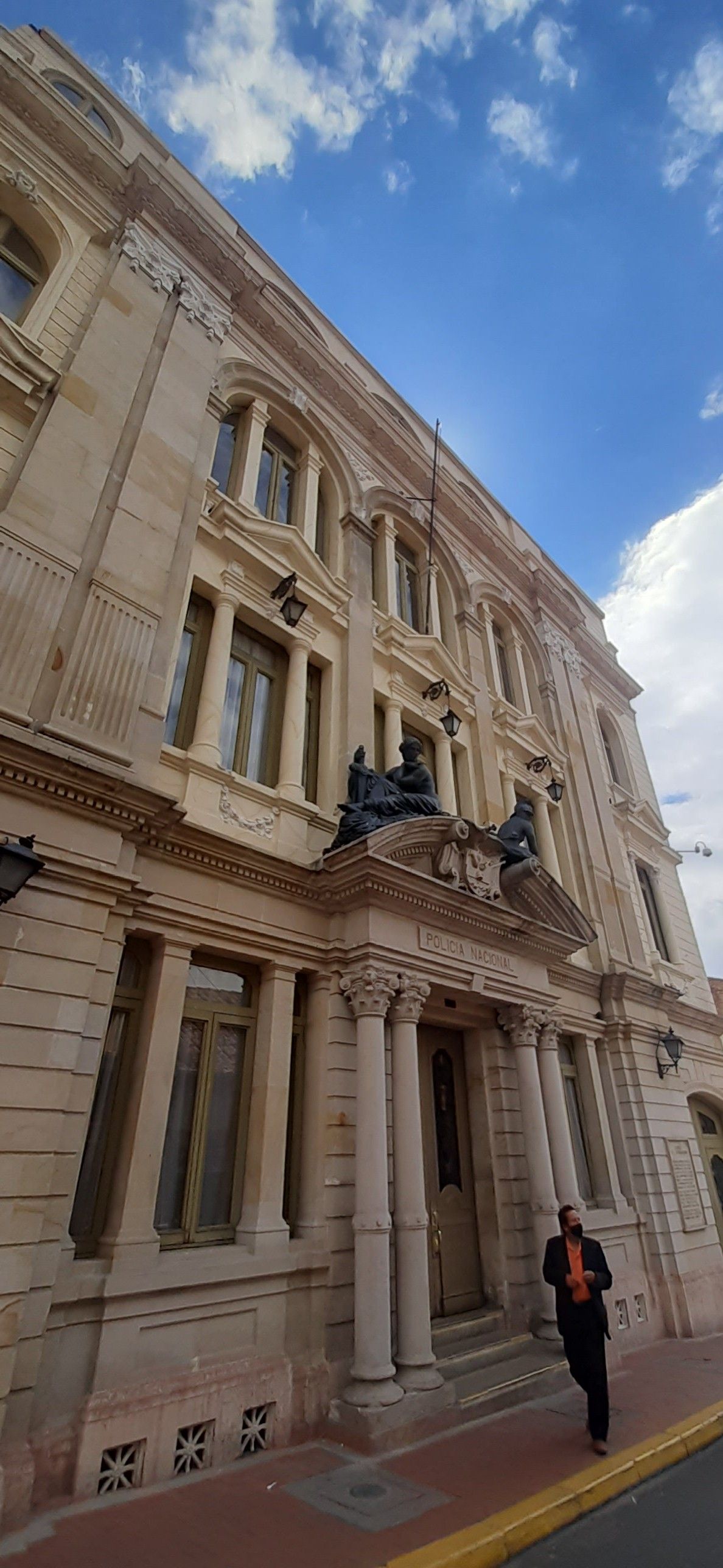
Upon entering the museum we are attended by a police officer who tells us that we must wait in the recession room until the guide arrives, where you can see a representation of the fight of the vase act that started the independence of the country that measures about 7 meters high by 5 meters wide. (The tours take place at 10 in the morning, 2 and 4 in the afternoon).
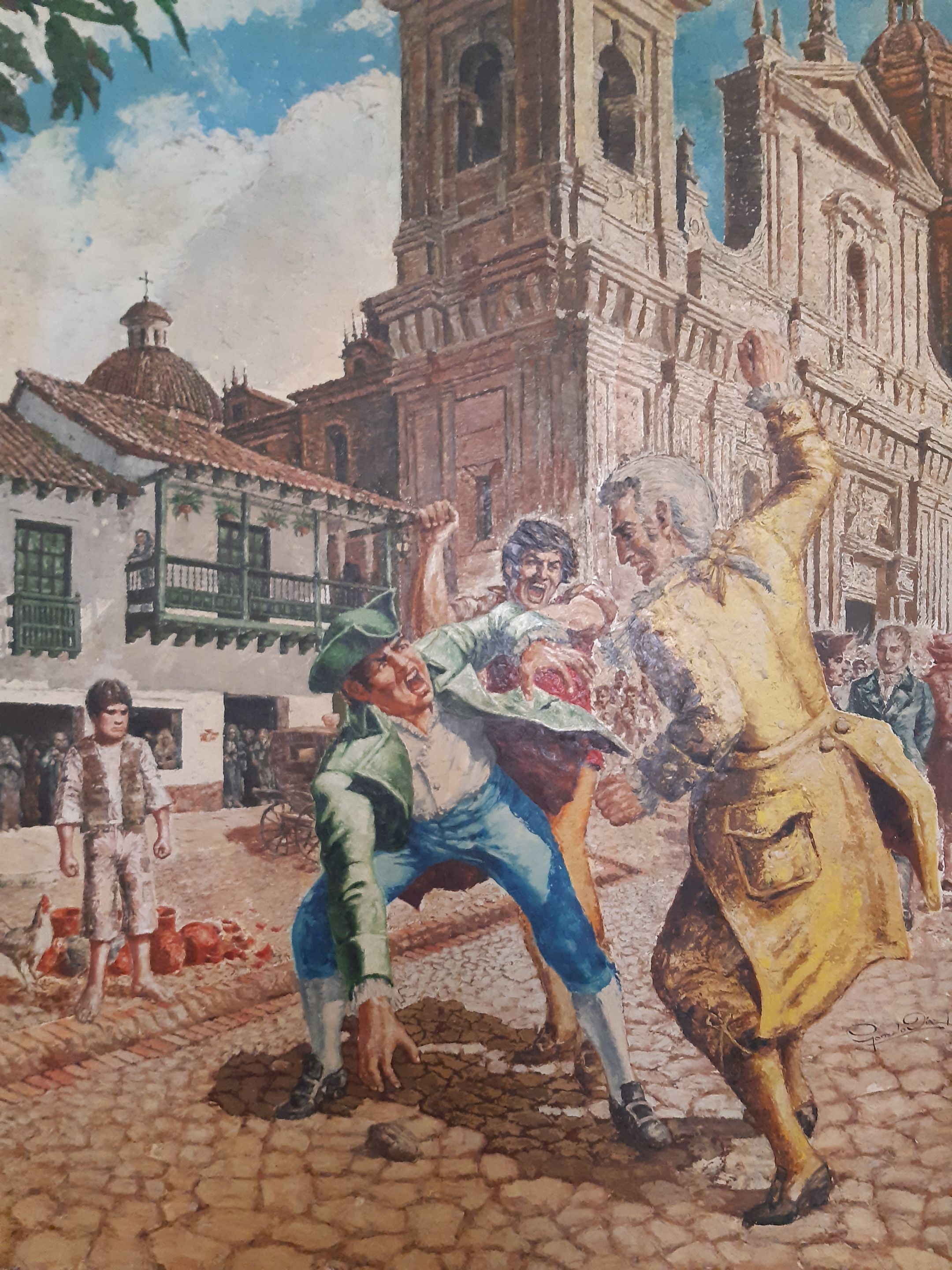
Upon arrival the guide, a very kind sub-lieutenant, takes us to the main entrance hall, welcomes us and explains how the place became a historical museum and patrimony of the country, as well as the security and biosecurity measures that we had to take at every moment of the tour.
In the first room there is an anti-explosives robot designed by the police research academy, which was designed to defuse possible explosive bombs by shooting water at very high speed, there is also a model of a prison carriage from 1912-1919 that had three policemen guarding the prisoners, then the second lieutenant shows us the first printing press of the police magazine of the country that is currently in circulation called "magazine" and finally a motorcycle operating in the second world war created by the security corps of the country.
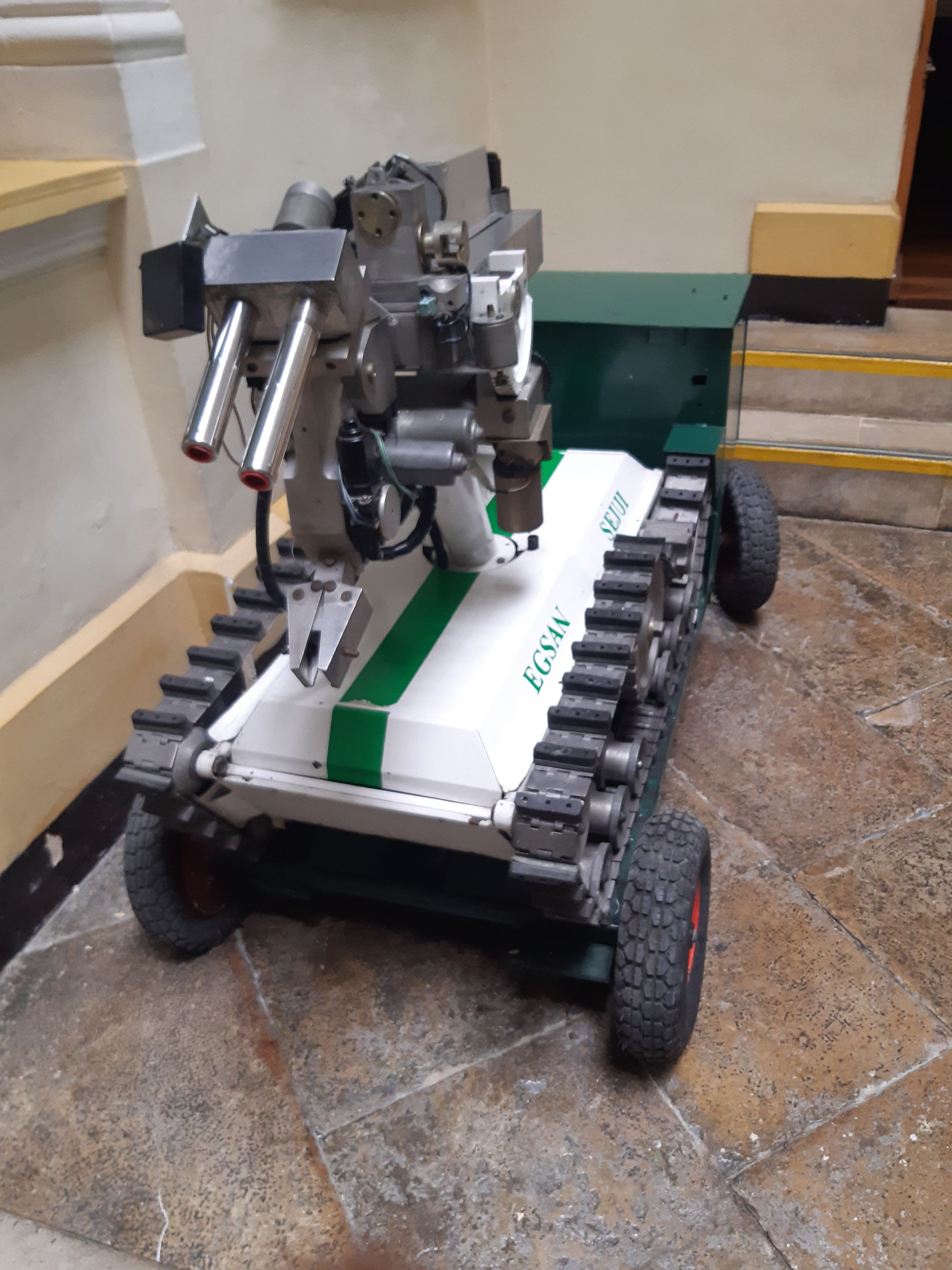
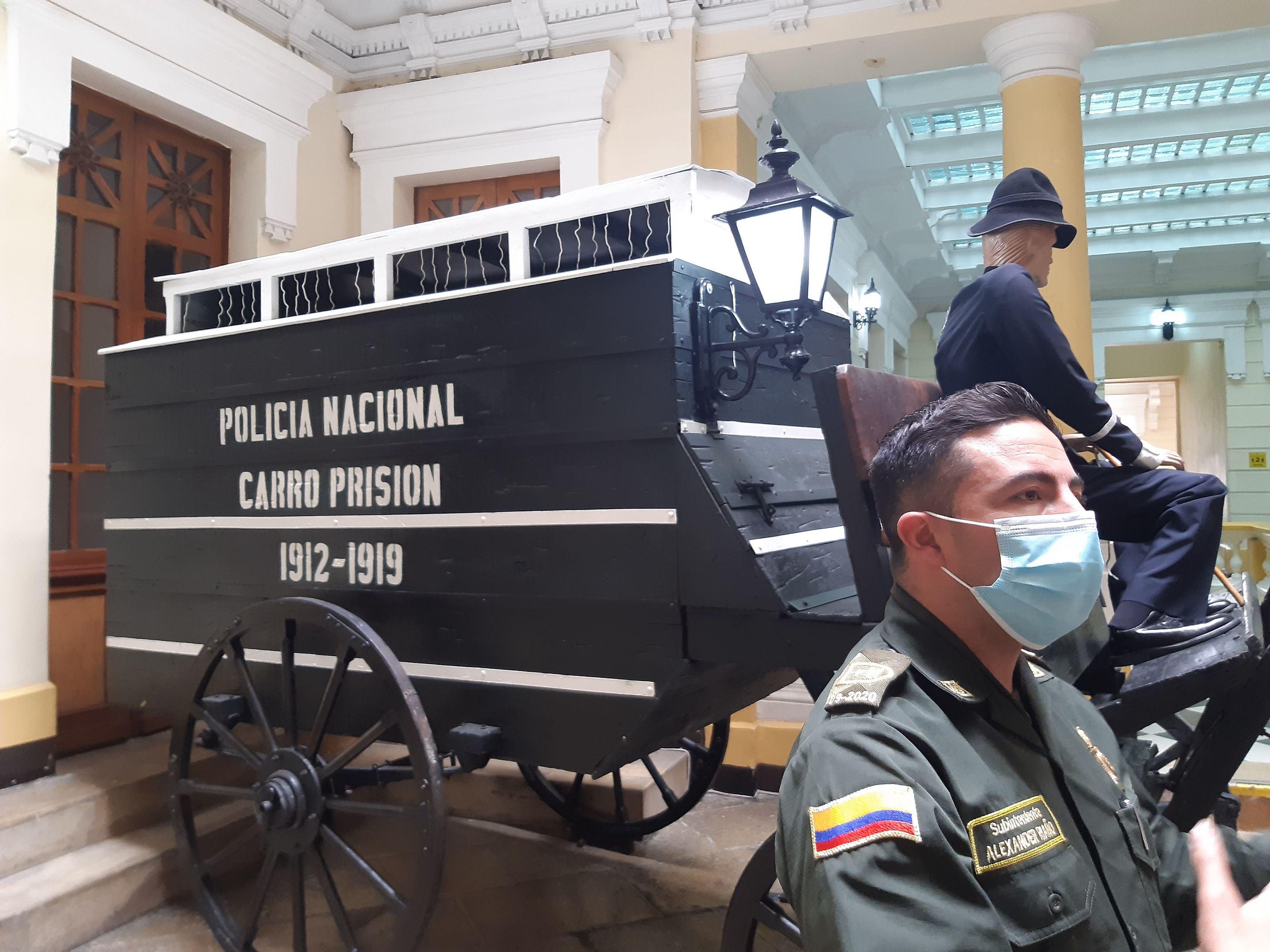
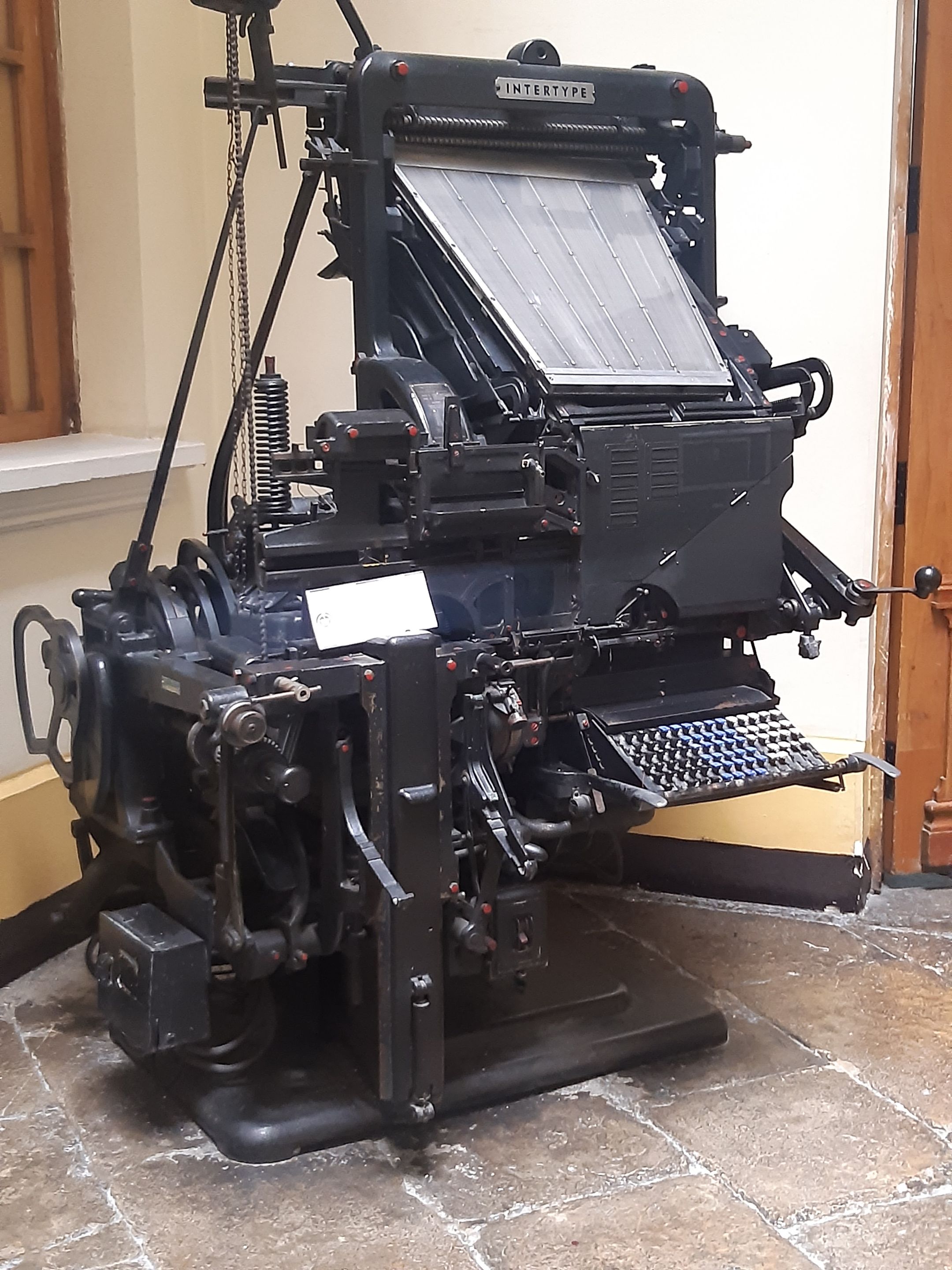
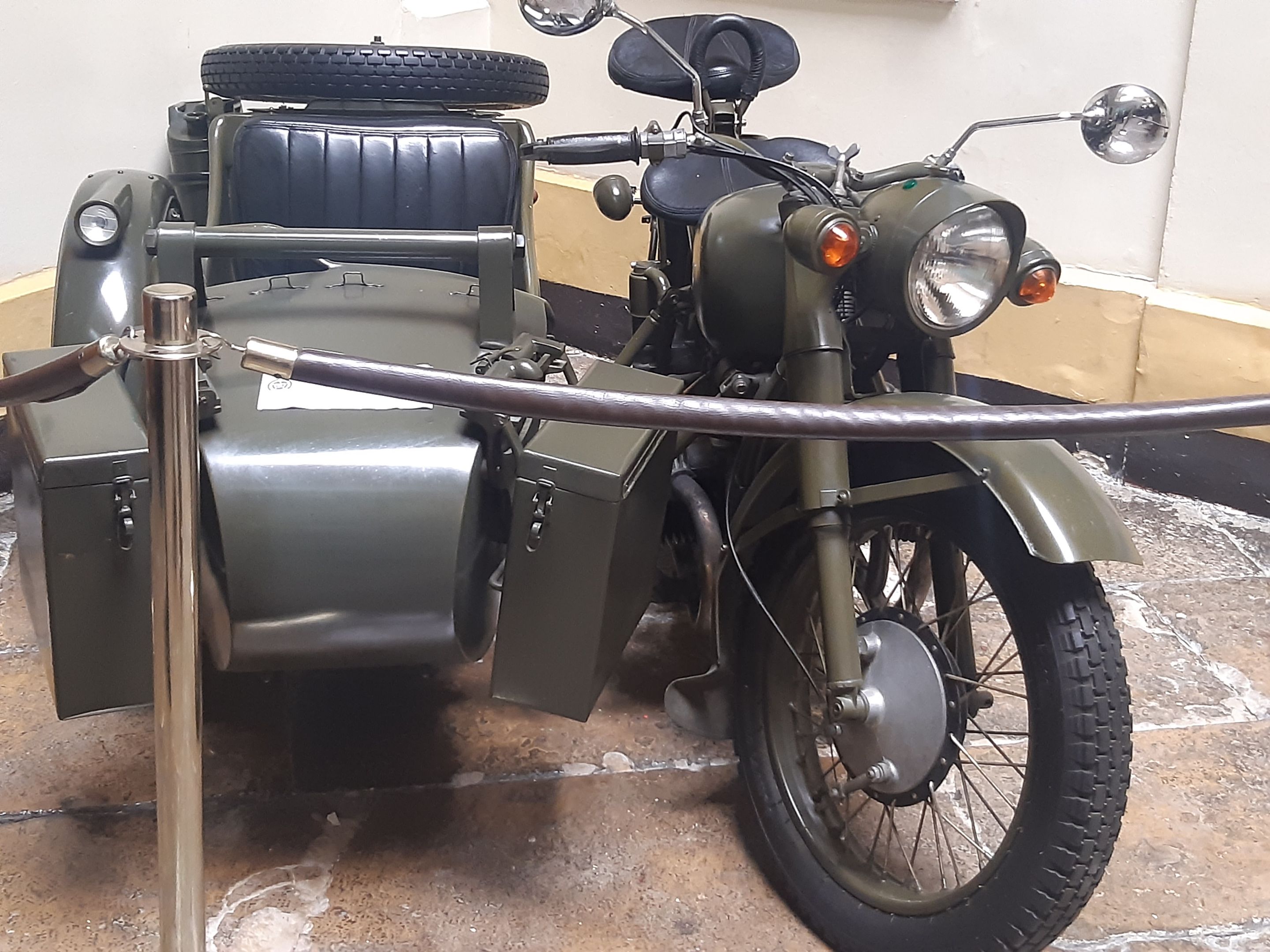
From that moment begins the tour of the entire palace and the beautiful architecture of the place, the museum consists of a basement, first, second, third and fourth floor which is a rooftop, also a curious fact is that the museum was the police headquarters of the country for long periods in the past.
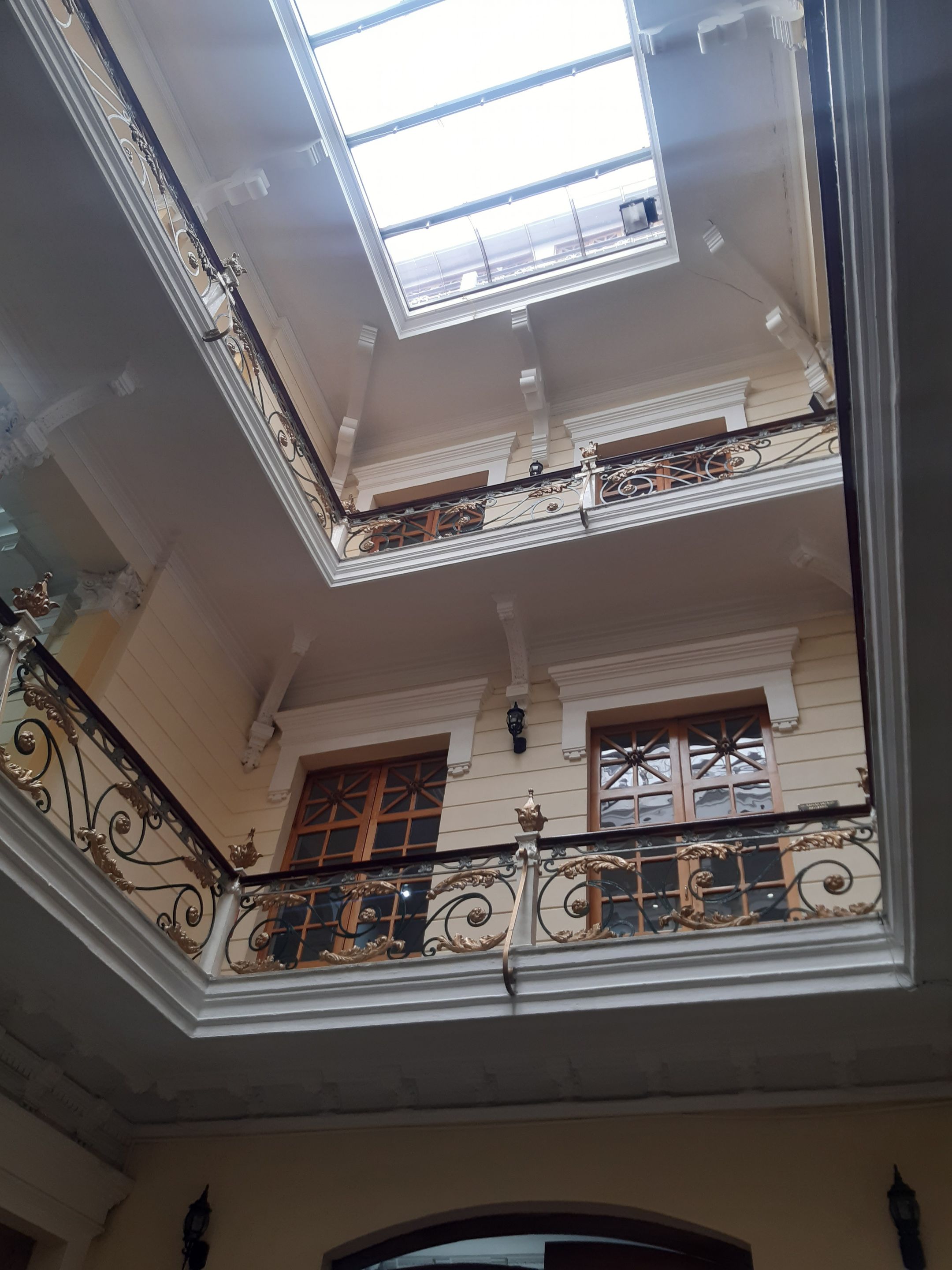
El Sótano: Investigación Criminal e Interpol e Inteligencia Policial
The Basement: Criminal Investigation and Interpol and Police Intelligence
The base of the palace is dedicated to the great captures and operations of the biggest criminals and organizations of Colombia in collaboration with other countries, also contains the pantheon of the Heroes, consists of three murals and a water fountain which illustrates the history of the creation and growth of the police institution until today.

En esta imagen se puede ver las grandes operaciones que realizo con éxito la policía para detener a los principales cabecillas de los carteles del narcotráfico de Cali y de Medellín.
In this image you can see the major operations successfully carried out by the police to arrest the main leaders of the Cali and Medellin drug cartels.
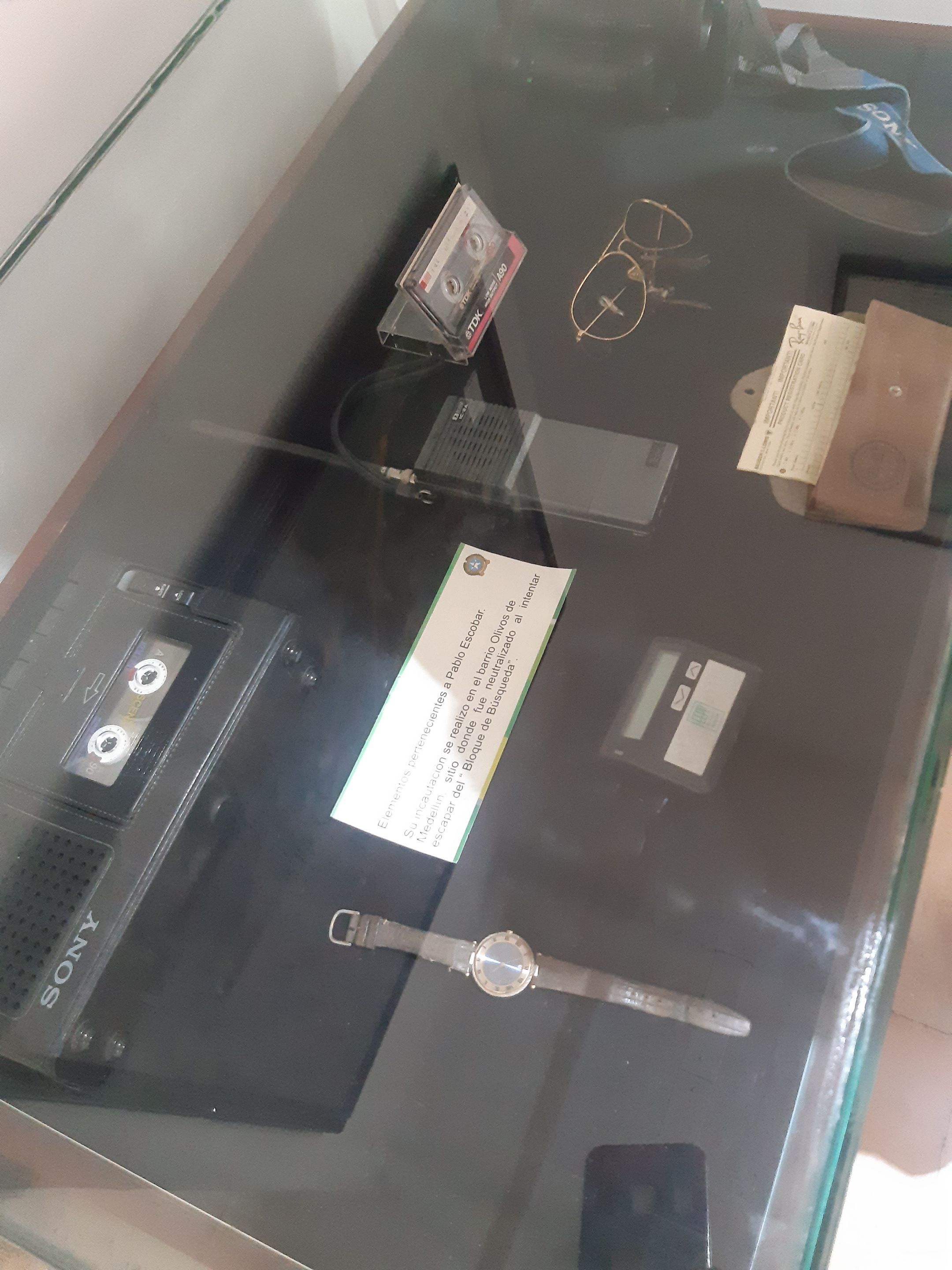
The last belongings of Pablo Escobar, in the fall of what is considered "the boss of bosses" the museum was able to obtain the last instruments that Escobar possessed at the time of his death, in the image you can see a watch, a Sony recorder, an intercom, a wallet with tickets to Central America with documentation belonging to him, in addition to his characteristic glasses, high caliber weapons and satellite radio that made calls to other countries.
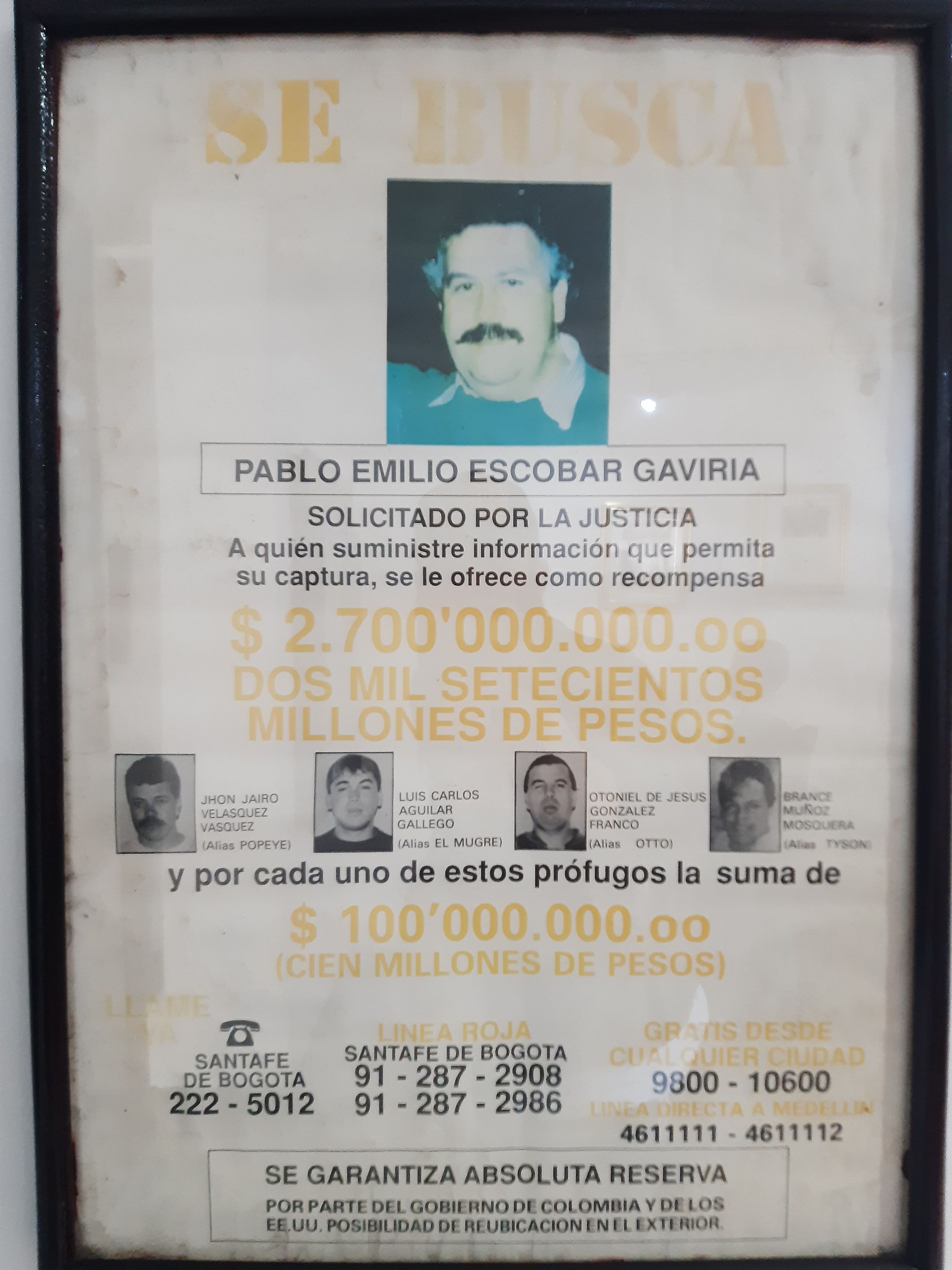
In this image you can see the original "wanted" poster published by the Colombian government with the amount of money for information that would lead to the whereabouts of the cartel's subordinates, offering a sum of two thousand seven hundred million pesos and security and anonymity of the informants.

Maquina contadora de efectivo que usaba Pablo Escobar para contar las grandes cantidades de dinero que poseía.
Cash counting machine used by Pablo Escobar to count the large amounts of money he possessed.
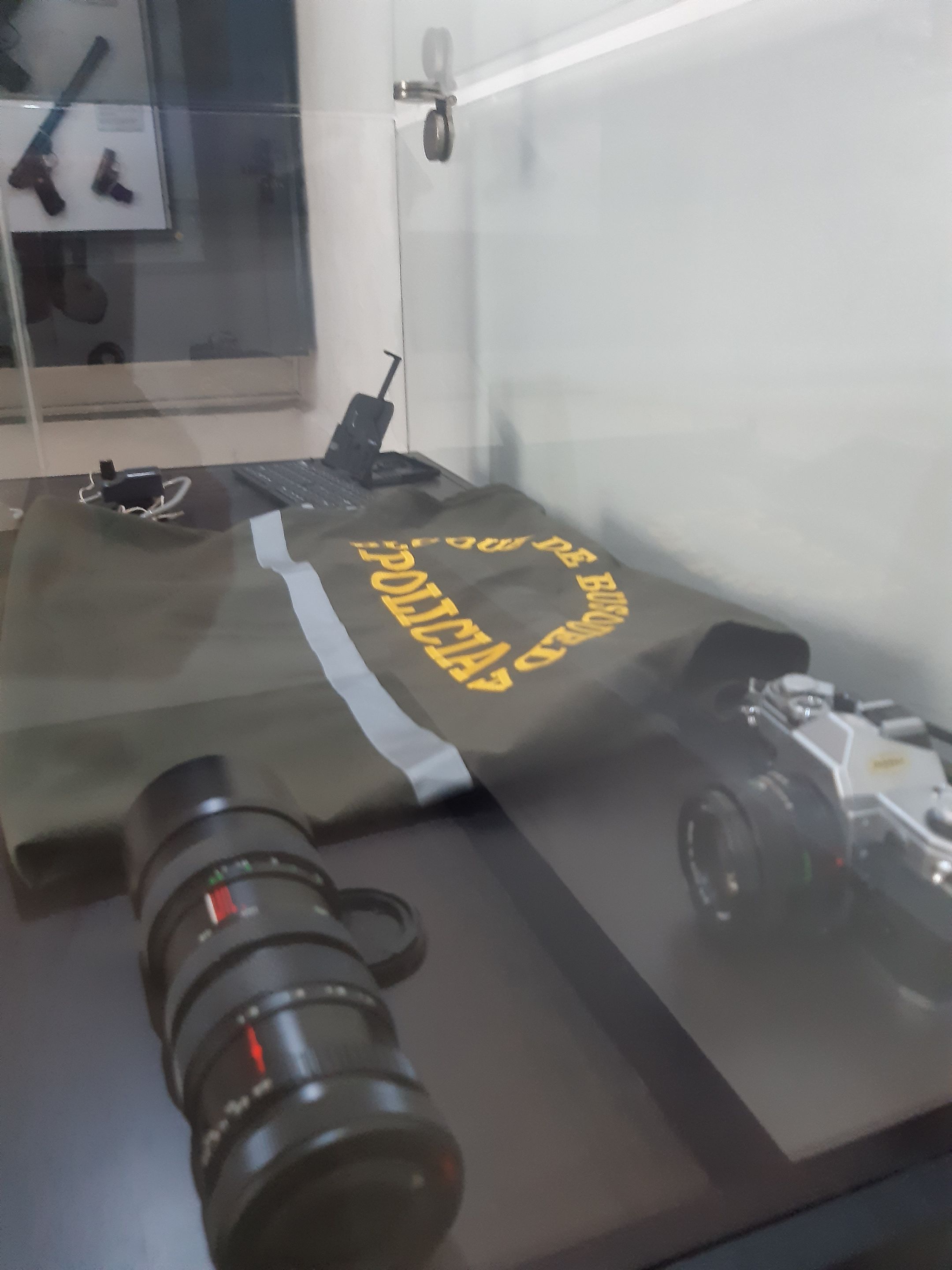
Los implementos que usaba el equipo de búsqueda creado por policías entrenados en EE.UU para dar con la captura del mayor narcotraficante de la historia de país.
The equipment used by the search team created by U.S.-trained police officers to capture the biggest drug trafficker in the country's history.
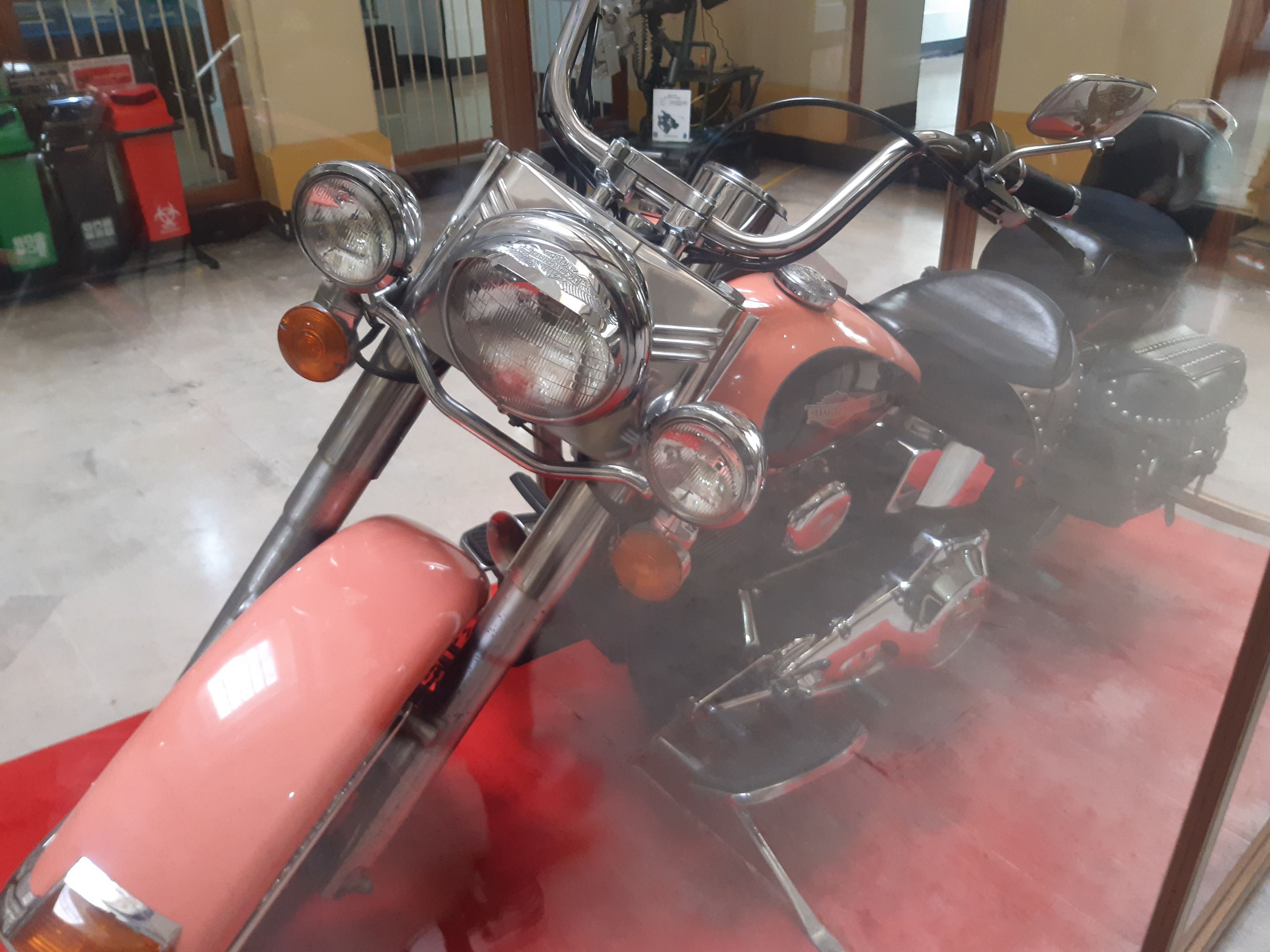
Al final de la Sala se encuentra una Motocicleta lujosa marca Harley Davidson, un gusto y excentricidades que tenia los capos de aquella época.
At the end of the room is a luxurious Harley Davidson motorcycle, a taste and eccentricities that had the bosses of that time.
Primer Piso: Sala Precolombina
First Floor: Pre-Columbian Room
After that strong review by a painful stage of Colombia, the first room that would be the first recommended stage of the museum to begin to know, is the history before colonization, with enters a picture marked with the tablets of Moses, where two of the two commandments without currently punishable offenses in the law, (thou shalt not kill and thou shalt not steal) in addition to instruments that were used for hunting, gathering, religious and in the kitchen made of neighborhood, the main thing of the room is the history of the "Guecha" a warrior of the Muisca ethnic group that was in charge of the protection of the villages of the attacks of other ethnic groups.
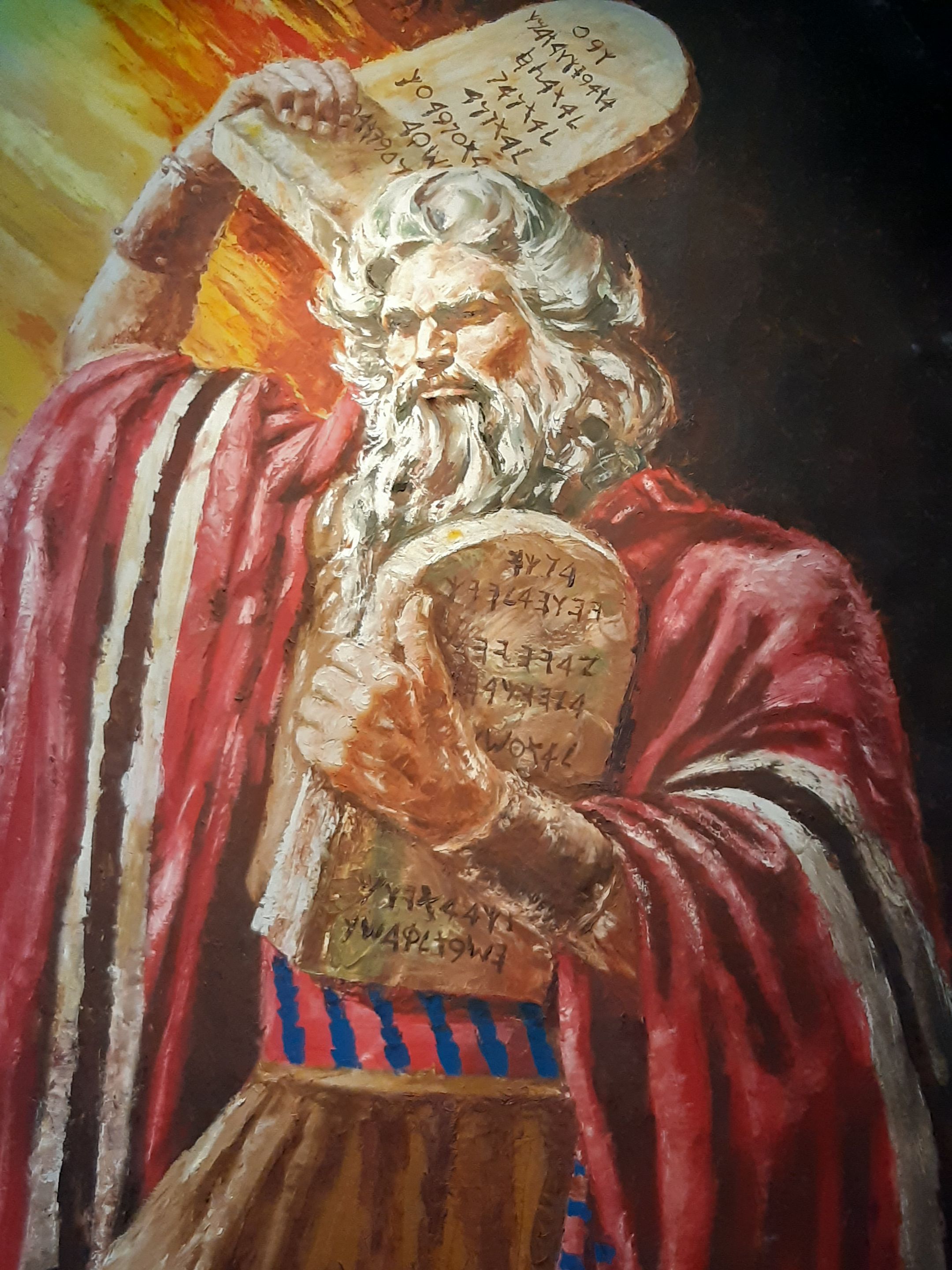
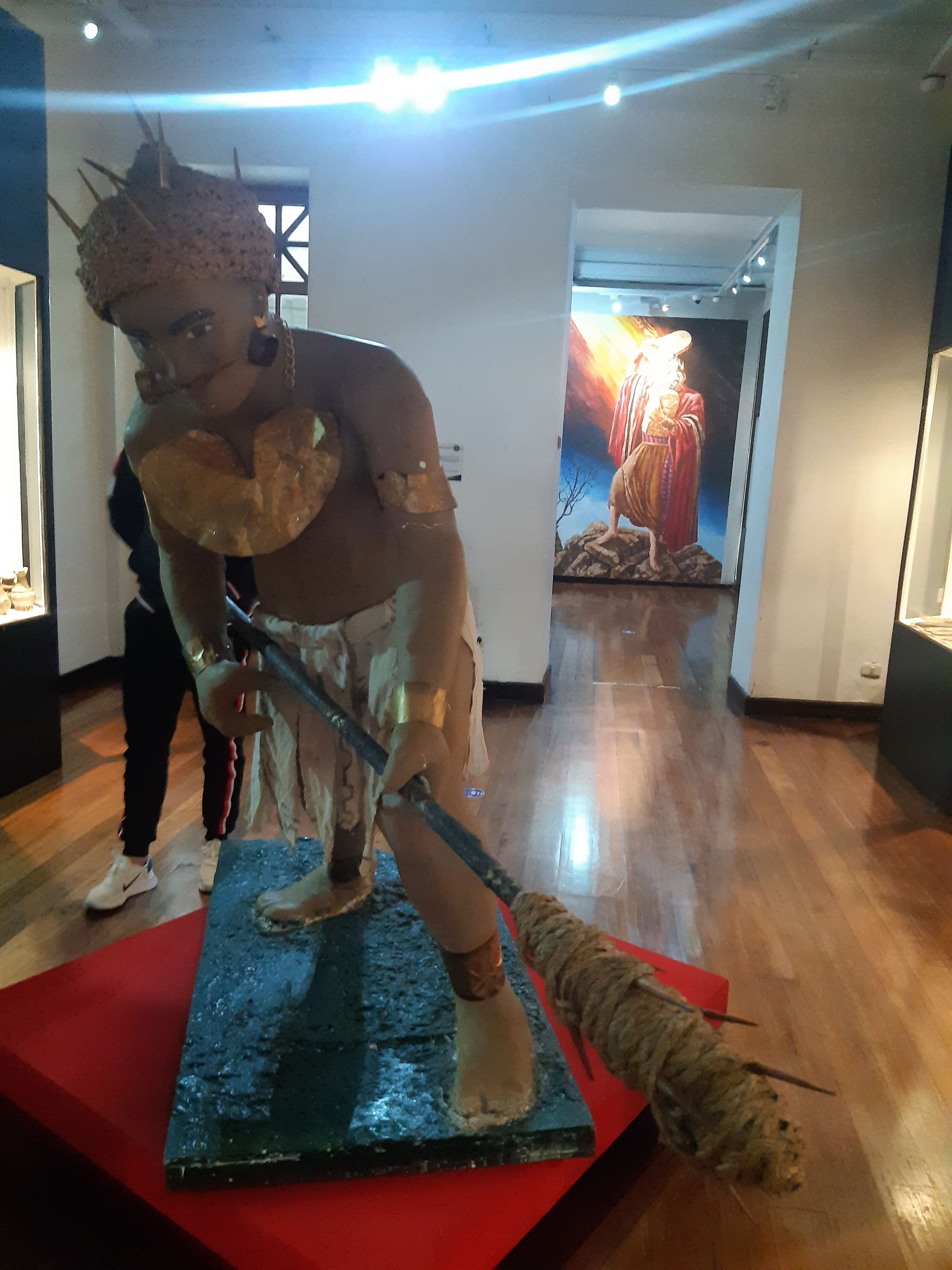
In addition there is the room of the special commissioner Juan Maria Marcelino Gilibert Laforgue, a French military who was who organized the national police of Colombia in 1891 managing to be the first director in different stages, in the museum are the original costumes of the commissioner in addition to his weapons.
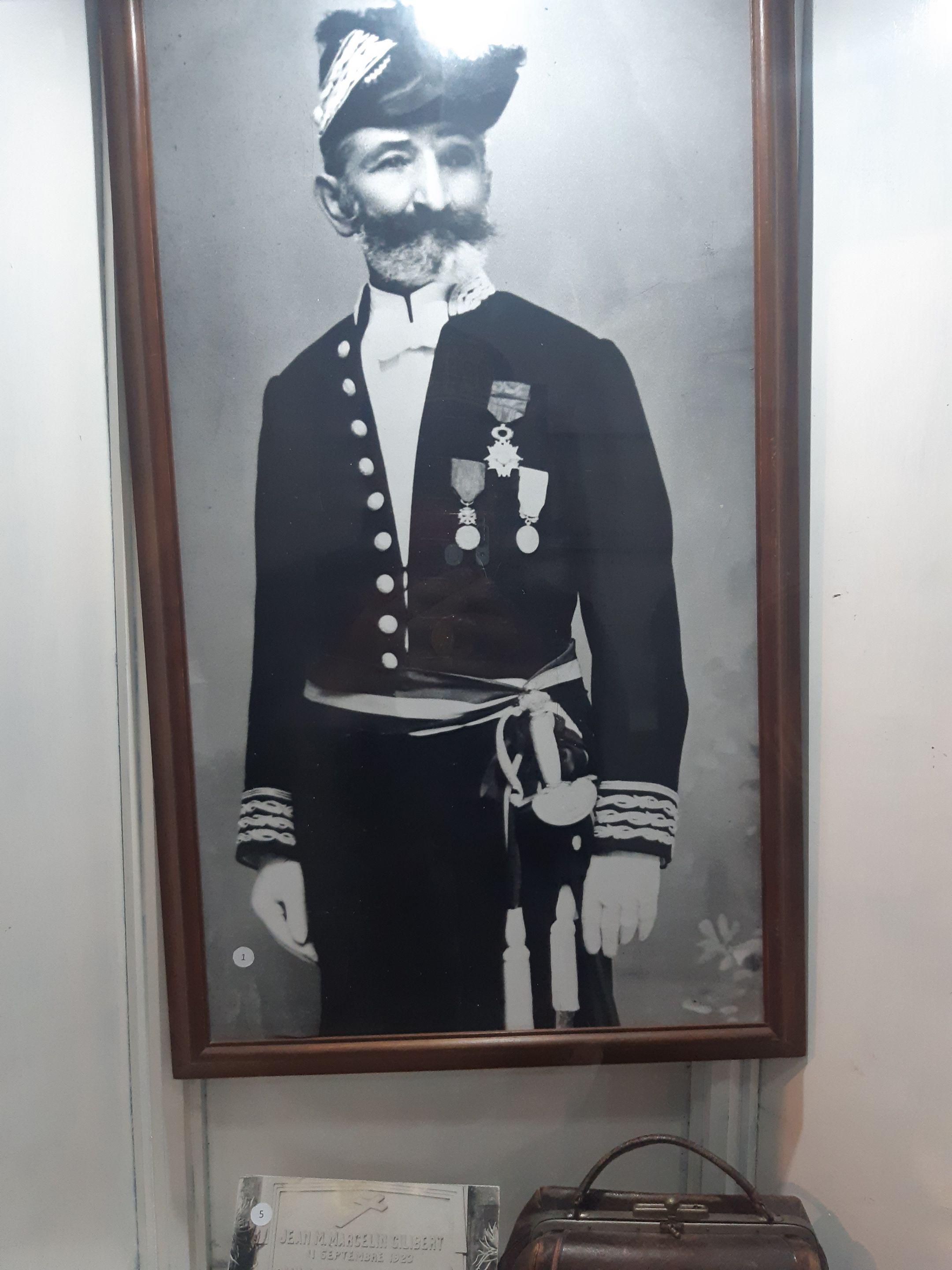
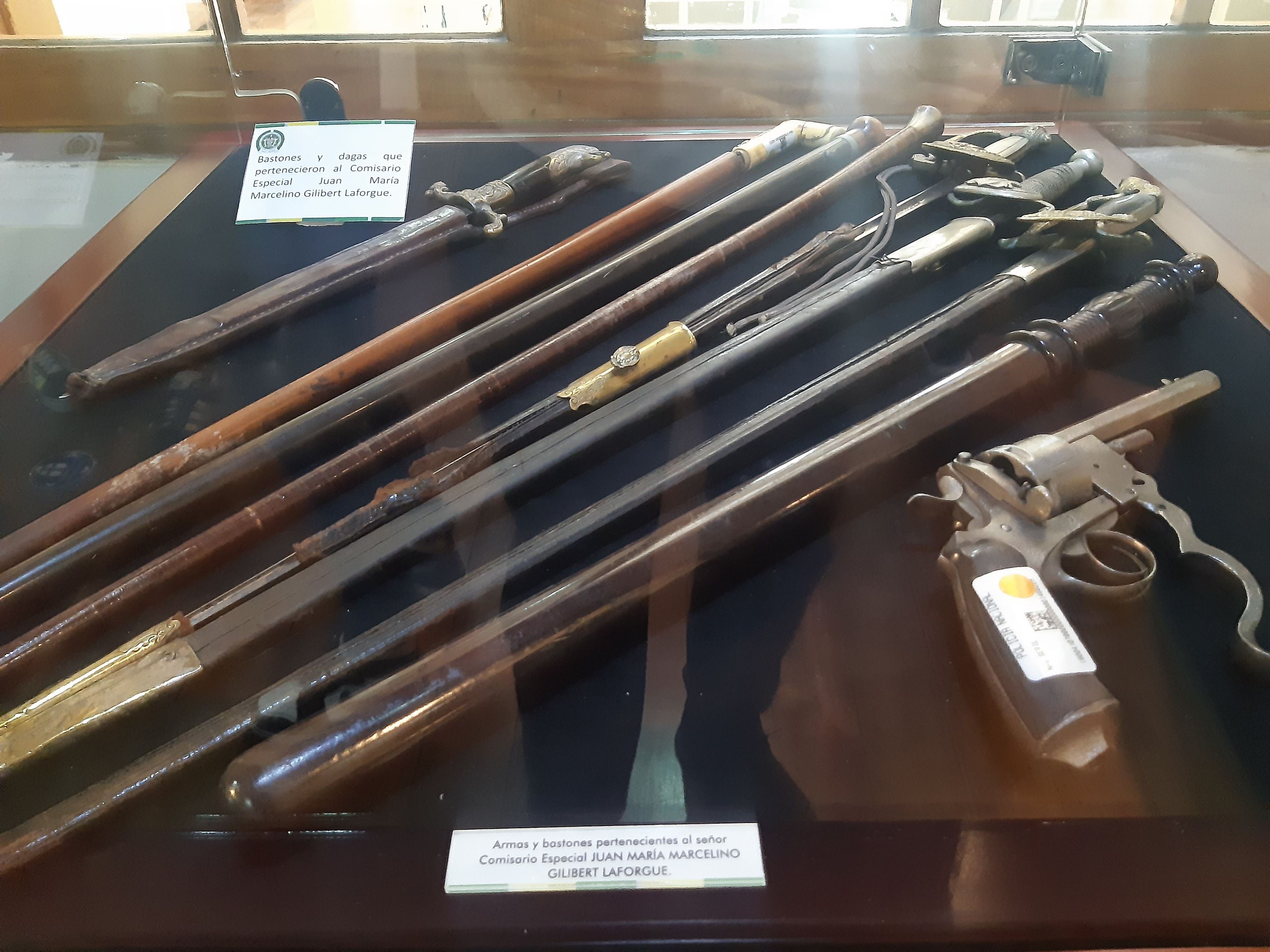
Also complementing this room is the general inspection, the Directorate of Incorporation, Directorate of Protection and Special Services and the office allusive to Strategic Communications.
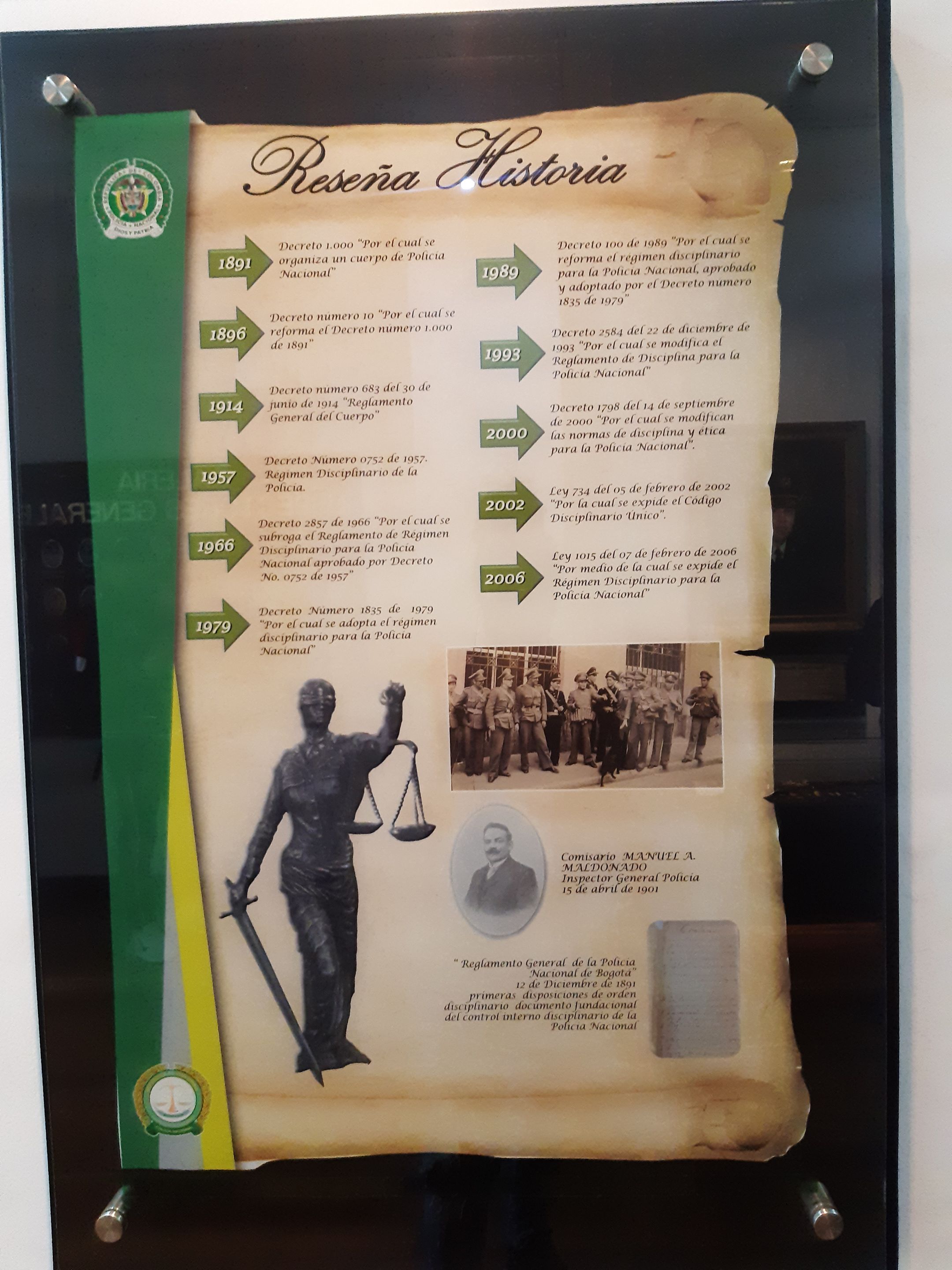
Segundo Piso: Comunicación, Servicios Sociales y Memoria
Second Floor: Communication, Social Services and Memory
On this floor you can find the different communication devices that were used 30 years ago to send messages and make calls within the police services, also you can see the mounted police group called carabineros, as well as the consecration medals to the most outstanding officers, there are also commemorative pictures to the former commanders and leaders of the National Police.


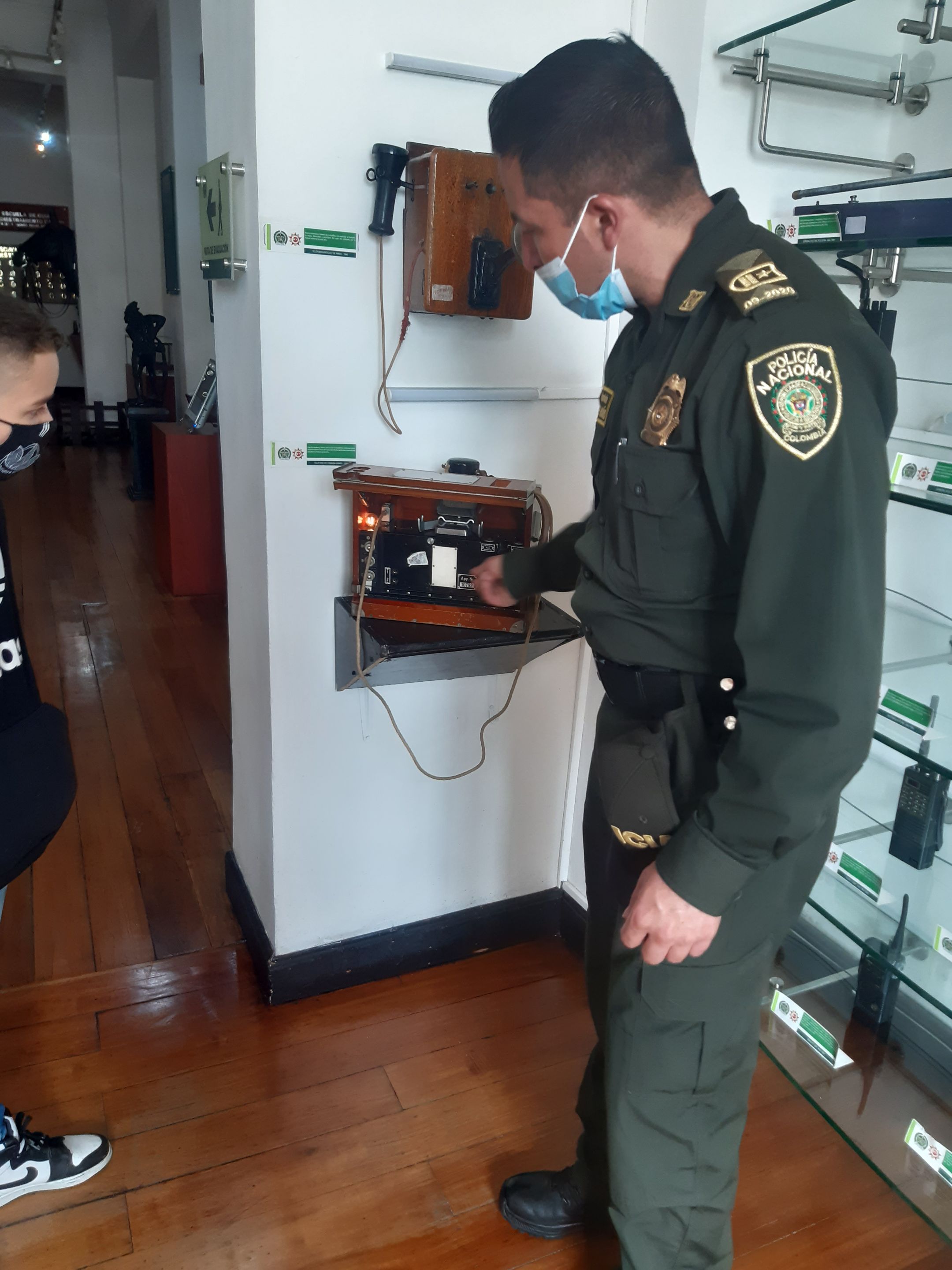
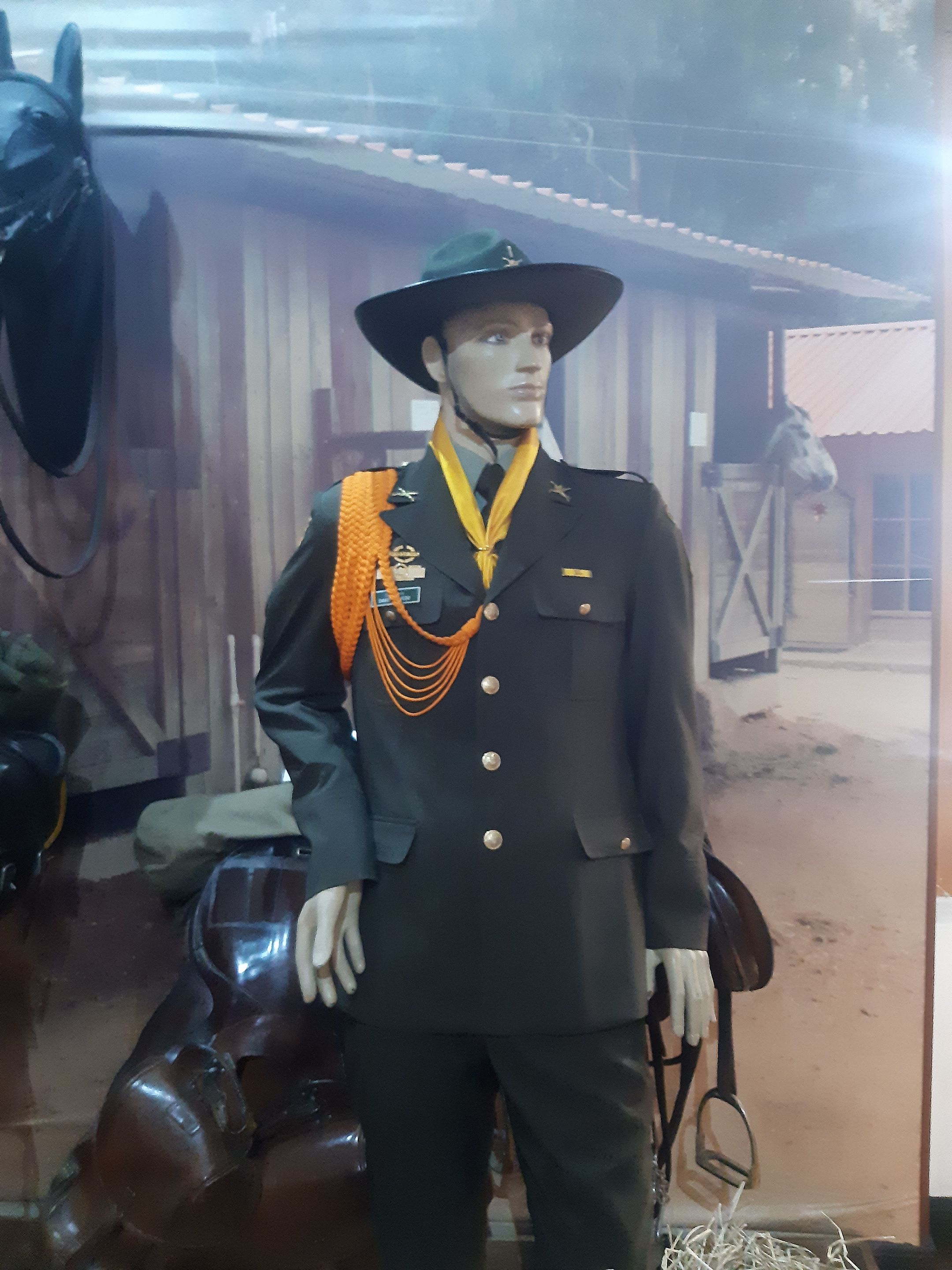
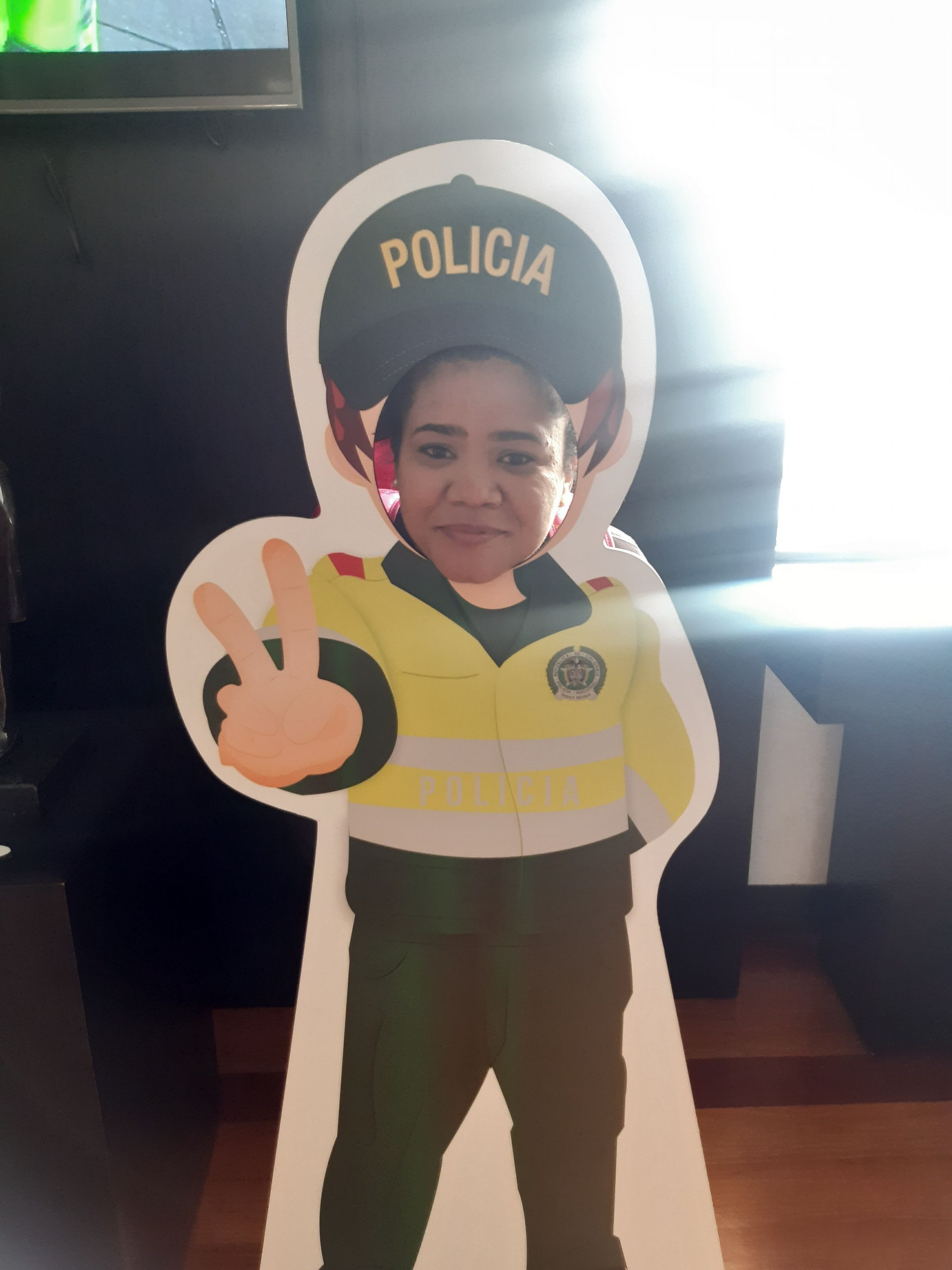 Mi esposa fue policia por un momento
Mi esposa fue policia por un momento
Tercer Piso: Las Armas
Third Floor: The Weapons
The floor that most caught my attention, was the tremendous arsenal of pieces that the museum has, about 200 copies of weapons from 1820 to the present, arsenal manufacturing, military and even sports are on this floor, there are pistols caliber 5.56×45 mm to home-made obtained by the police in anti-criminal operations, as well as shotguns, rifles, machine guns, rifles, rifles, long-range guns everything that makes up and has been part of the armament of the police for a long time.
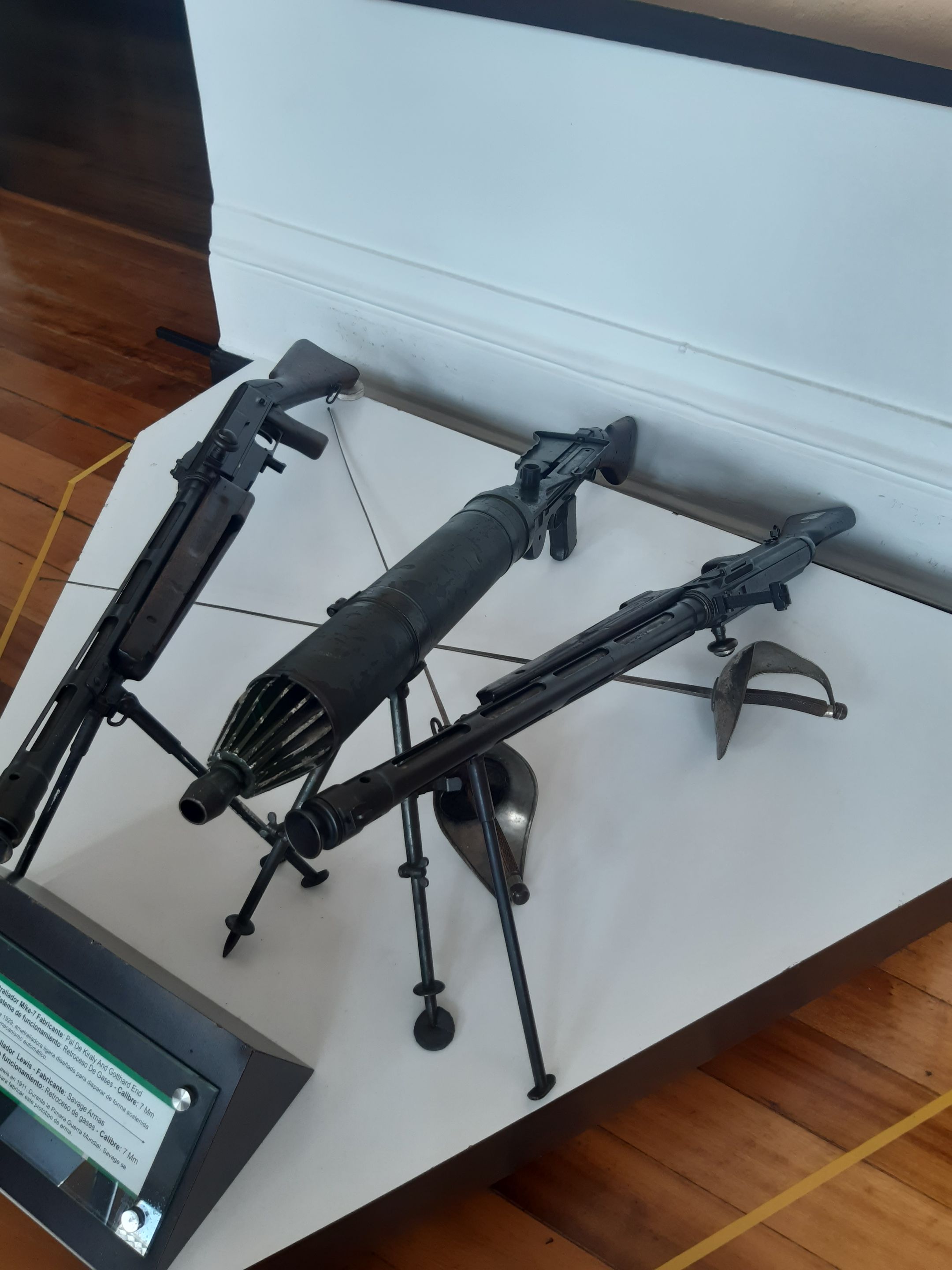
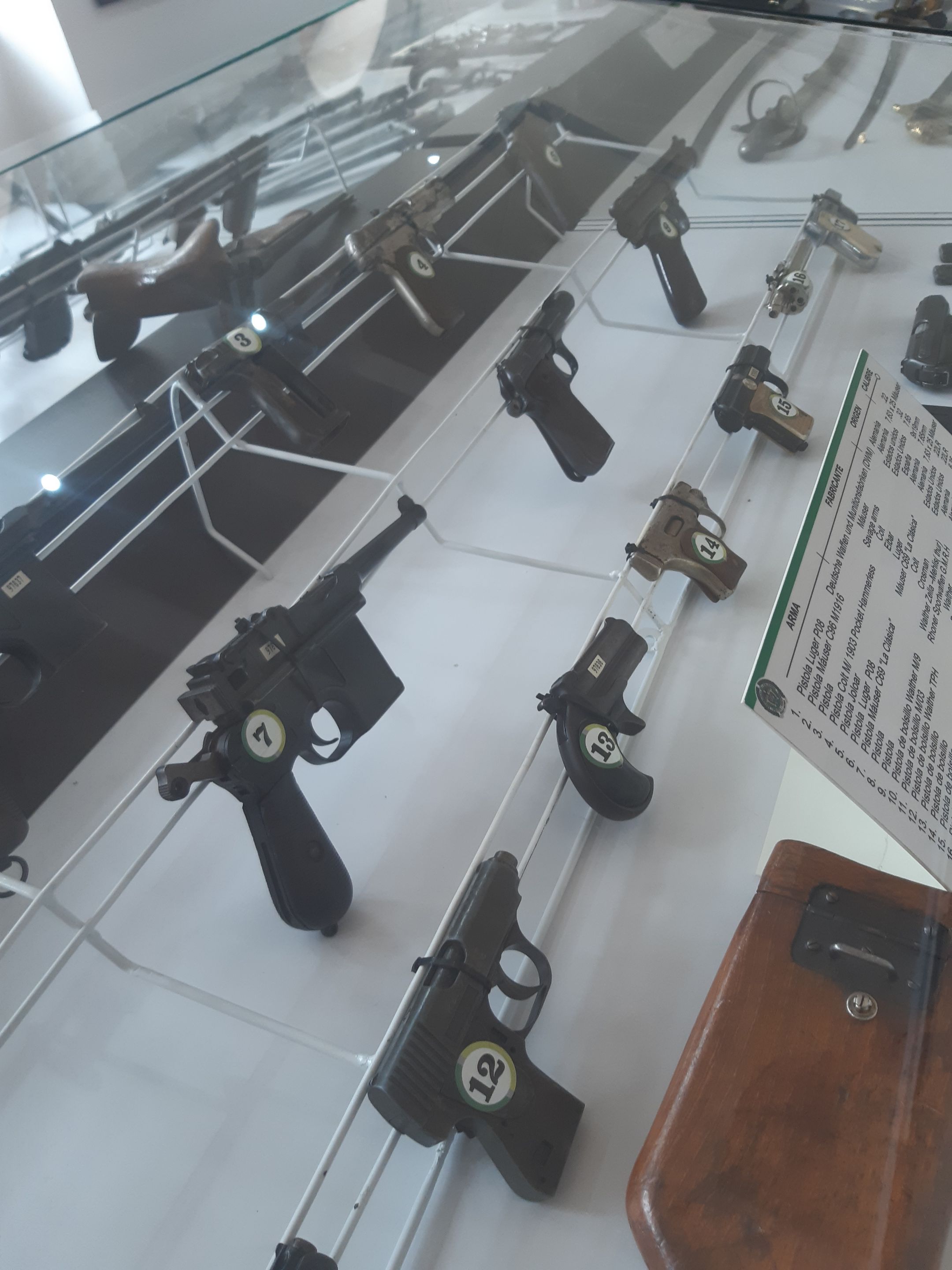
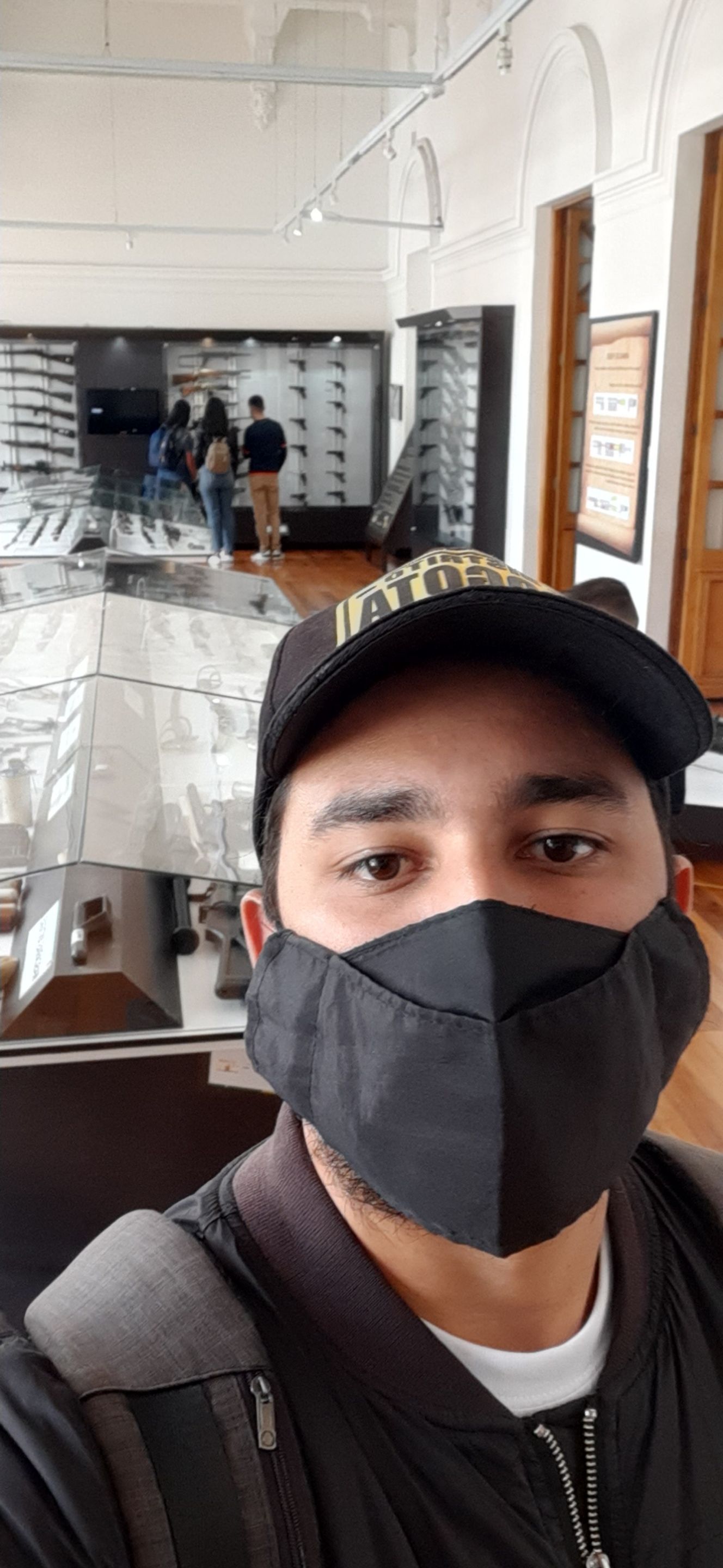
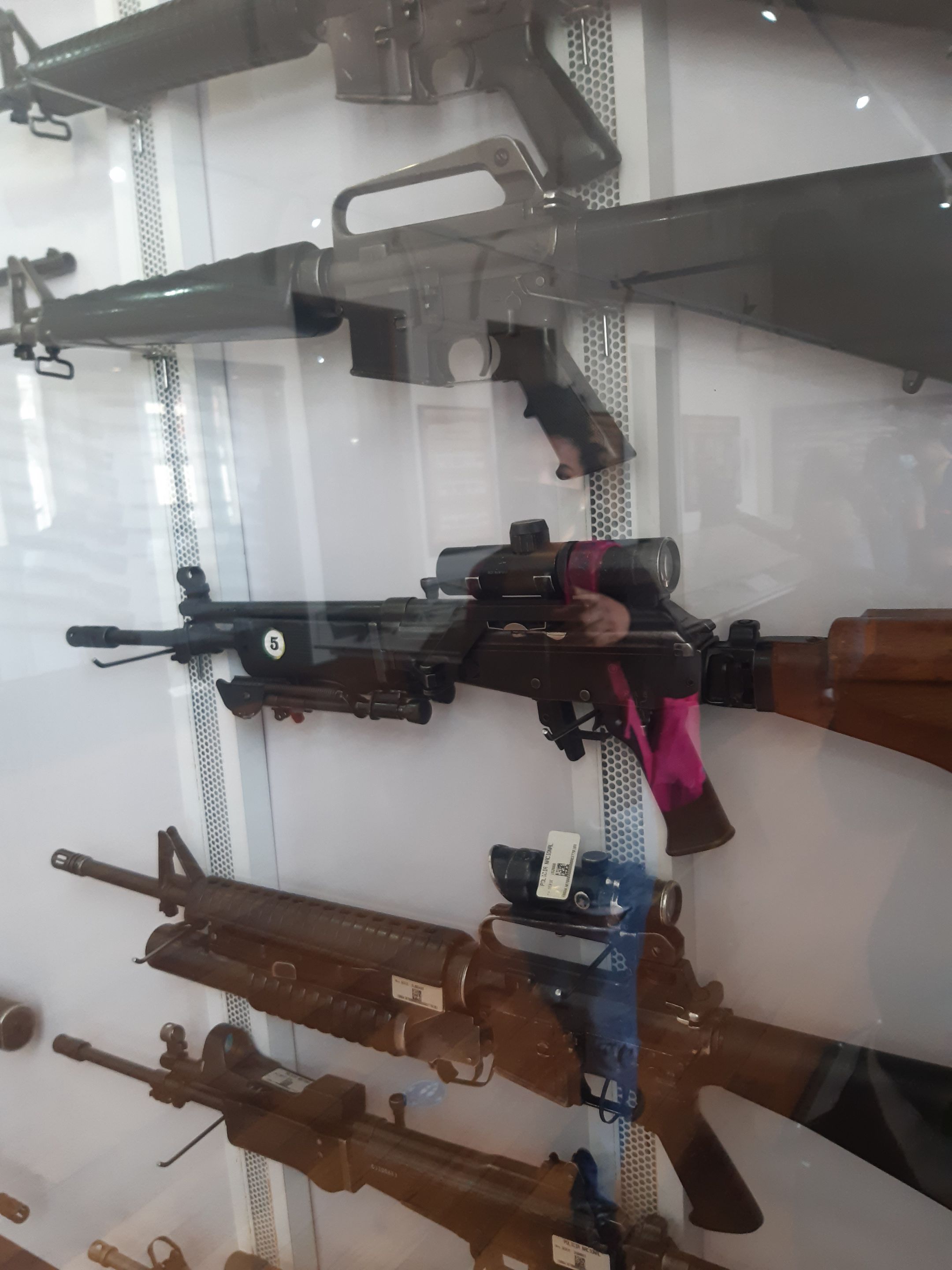
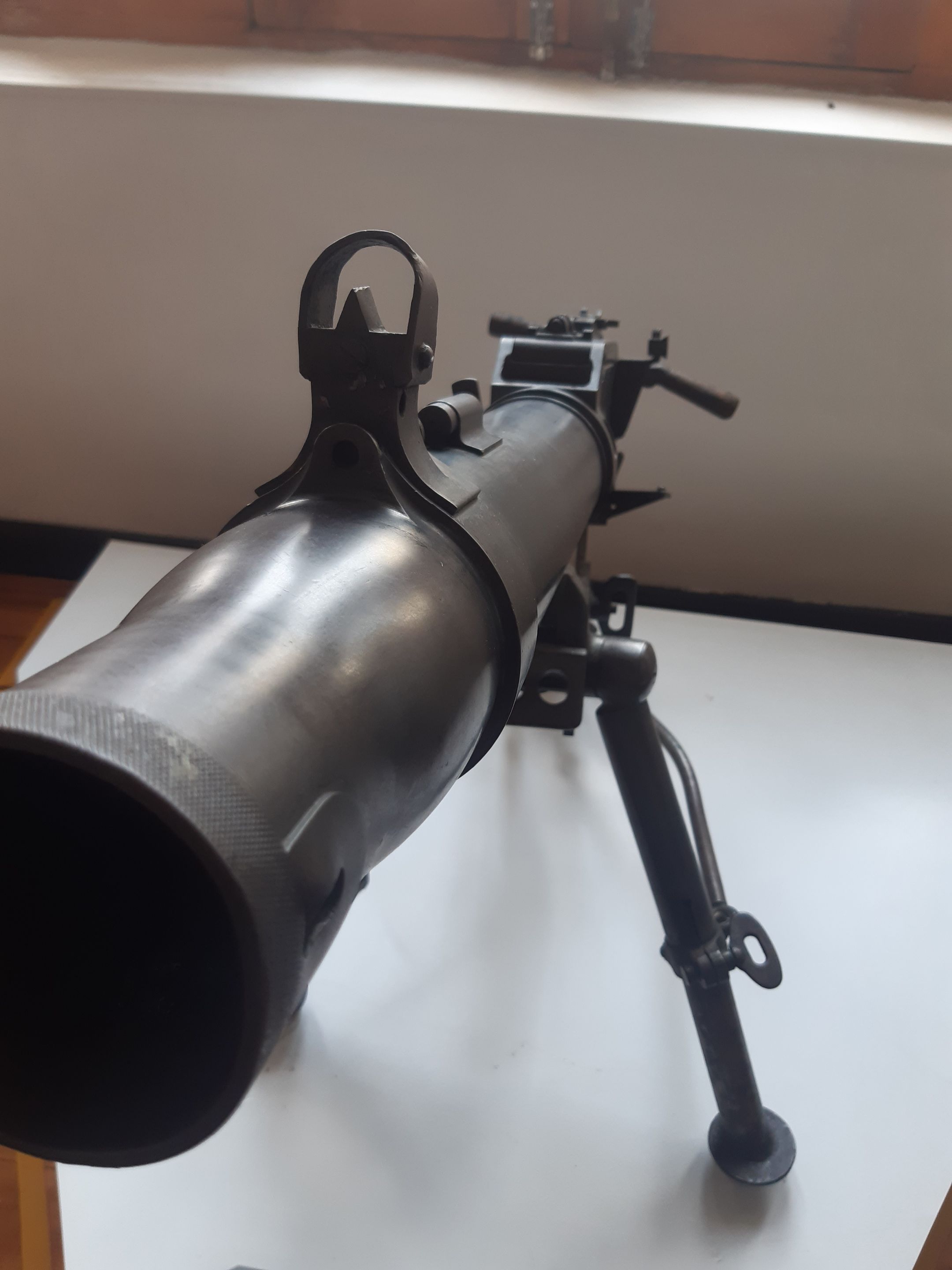
Cuarto Piso: La Terraza con Mirador
Fourth Floor: The Terrace with Viewpoint
Great surprise we took those who were on the tour when they take us to the fourth floor which would be the roof or terrace, is a place that provides a spectacular view of the center of Candelaria, also has the view of the Congress of the Nation, the Pre